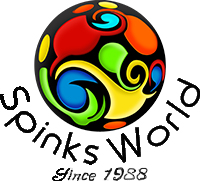CHARACTERISTICS
JM Series Mirror Screen Inks offer excellent gloss and coverage .They can be used to take the place of plating and silver stamping.
APPLICABLE INDUSTRIES
Indicator plate, mirror, card, and thin film switch used on household appliances.
APPLICABLE MATERIALS
| JM Series | Thinner | Mirror Effect | Material | Adhesion |
|---|---|---|---|---|
| JM-8000 PC | S-807 | Bright | PC, PVC, PMMA,treated PET, PS | Good |
| JM-8000 PET | S-16A | Bright | Untreated PET | Good |
| JM-8000 GL | S-16 | Bright | Glass | Good |
PHYSICAL CHARACTERISTICS
Sieving capacity : 100-120T, < 3μm thickness
Blade Hardness : 70-80 angel
Tack-free time : 6-12 minutes
Hard drying time : 8-12 hours
Cleaner: S-186
APPLICATION
- Stir it well before use
- No thinner is needed under normal conditions. Please use S-807 Thinner when necessary to avoid poor printing quality.
- There is the Mirror Effect after finish printing and the tack-free dry, the dry condition can choose according to the printing material.
- In order to avoid scratch, over printing work can do on the surface. The over printing ink can use our PS Series (single component) and EP Series (double component) and use the special thinner. If the material is PET, can use the DYH Series ink to finish the over printing.
- Mirror effect is jointly created by ink layer and substrate . Only print on backside shows such an effect.
NOTICE
- Different substrate products different mirror effect
- Thinner used exerts significant effect on mirror effect. Some thinner may result in no mirror effect.
- Misuse of overprinted ink may influence mirror effect.
- Decrease tension of halftone screen, keep screen close to the substrate, and reduce pressure of scraper blade to create excellent mirror effect.
- The dry speed is fast, and avoid the mesh cannot stop by the ink, so, do not printing at the ventilation place.
- The mirror ink should be dry at the tack - free condition, then can be dry in the oven at 60~70℃ for 30 minutes after mirror effect.
- It is necessary to test effect and performance before volume printing.

